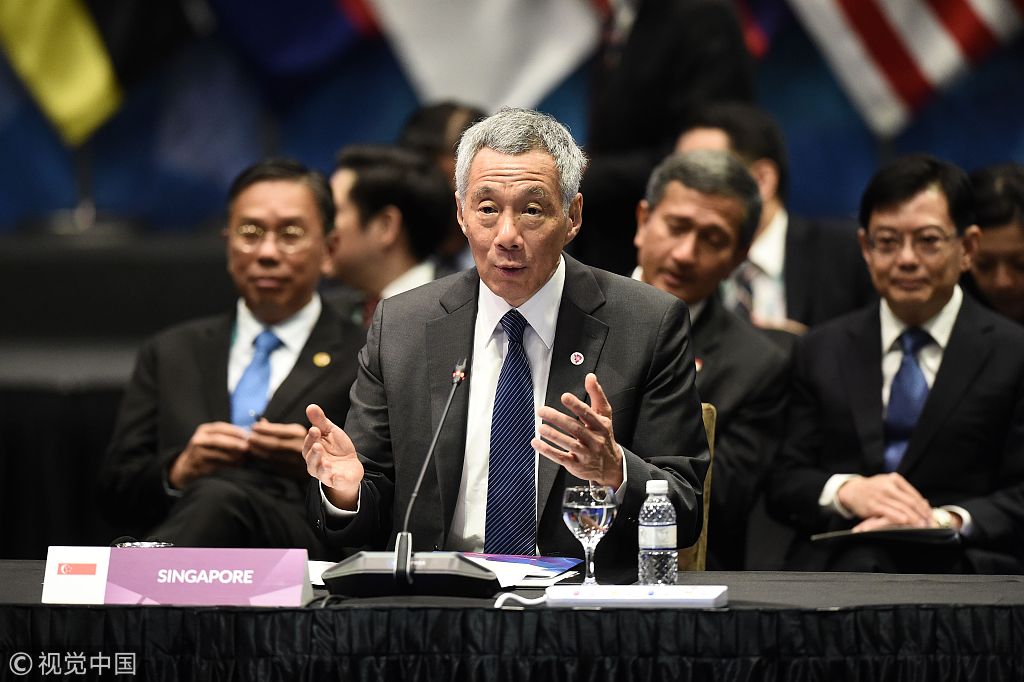ASEAN-China trade boosting growth


Economic relations between China and ASEAN have strengthened considerably over the past two decades, resulting in rapidly growing bilateral trade and investment flows. ASEAN-China trade has grown strongly, increasing from $192 billion in 2008 to $515 billion by 2018.
A number of key drivers have helped strengthen the economic relationship between China and the Association of Southeast Asian Nations.
One major factor has been the fast pace of economic growth in both the ASEAN and Chinese economies. China's share of world GDP rose from an estimated 4 percent in 2000 to about 15 percent in 2017, and it is forecast to rise further, to about 21 percent of world GDP by 2028. ASEAN's GDP, too, has grown rapidly, at an annual average rate of about 5 percent per year since 2011, increasing its total GDP to $2.8 trillion in 2017.
A second important contributory factor has been the initiatives for trade liberalization, notably the creation of the China-ASEAN Free Trade Area, which has substantially eliminated tariff barriers on goods trade between China and ASEAN since 2010.
Third, the consumer markets of both China and ASEAN have been growing rapidly over the past decade, helping drive demand for a wide range of imported goods and services.
China's rapid GDP growth over the past decade has increased the country's per capita GDP from $2,650 in 2007 to $8,670 in 2017, propelling China into the ranks of upper middle-income countries and creating a fast growing middle class that is driving consumer spending across a wide range of goods and services.
Some of China's largest cities now have considerably higher per capita income levels, with Beijing's per capita GDP estimated at $20,356 in 2017. As a result, China has become an increasingly important export market for many ASEAN members for a wide range of goods and services, including agricultural and mineral commodities, energy products, manufactured goods, and services such as tourism.
ASEAN, too, is a large consumer market, with a population of 658 million and rapidly growing household consumption in a number of populous ASEAN economies, including Indonesia, the Philippines and Vietnam. ASEAN has also become a major export market for China, with total Chinese exports to ASEAN member states reaching $279 billion in 2017, up 9 percent year-on-year, accounting for 12.3 percent of total Chinese exports.
Besides, China has become a significant source of new foreign direct investment for ASEAN member states. Chinese FDI in ASEAN member states averaged about $7 billion a year from 2013 to 2016.
With wages in the manufacturing sector rising rapidly in China's coastal region, many Chinese enterprises have invested in ASEAN member states, such as Cambodia, to set up production units in order to maintain export competitiveness in low value-adding manufacturing industries such as garments and footwear.
An important new focus for economic cooperation between China and ASEAN has been through China's Belt and Road Initiative. The BRI is providing large-scale financing for infrastructure projects in many developing countries worldwide, with ASEAN countries being a key part of the BRI. With two-way trade flows having grown so rapidly, improving transport connectivity between China and ASEAN countries through road, rail and port infrastructure will help to reduce logistics costs and further boost the growth in trade.
China is providing financing for a number of rail infrastructure projects in ASEAN countries, including in Thailand, Laos and Cambodia as well as for the Jakarta-Bandung High Speed Rail Link in Indonesia. The BRI is also financing infrastructure to develop maritime connectivity for ASEAN countries, through projects such as development of port infrastructure.
IHS Markit forecasts that China will become the world's largest economy by 2028, overtaking the US.
And China's per capita GDP is forecast to reach $10,000 per person by 2019, rising to $22,000 per person by 2028. This will make China's consumer market an increasingly important growth engine for ASEAN's export sector across a wide range of goods and services. Meanwhile, ASEAN has also become one of the world's largest consumer markets, and is already a major export market for China.
Both ASEAN and China are key driving forces for further trade liberalization in the Asia-Pacific, notably through the Regional Comprehensive Economic Partnership free trade agreement being negotiated among 16 Asia-Pacific nations.
The long-term outlook is for continued rapid growth in trade and investment flows, with China and ASEAN being key growth engines for the Asia-Pacific region as well as for the global economy.
The author is Asia-Pacific chief economist for IHS Markit.


































